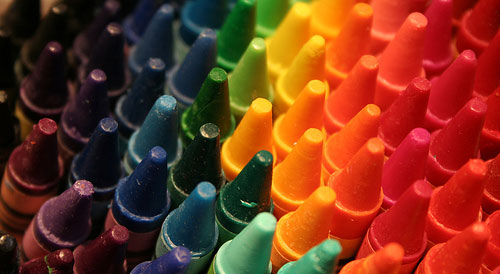Choosing a Good Color Combination for Your Website Design. A Begginer’s Guide
“Color it perfect” when it comes to arriving at the best combination that will be vital for any website design when considering the elements of the page layout. Success can be absolutely dependent upon choosing correct color combinations as well as using a really poor one can lead to nowhere but miserable failure. How many times have you landed upon a particular site and seen the colors presented to you and could only say “Yuck?”
Well, unless you want a lot of people asking that old proverbially clichéd question, “What was he thinking?” you better be learning how to pick and choose color combinations correctly or find some help.
Color is such a psychological component. Therefore, it is one of those activities that must be meticulously executed in order to arrive at the right color combination that will match the theme of your website. Some of the best places to start include matching website colors is with your business logo colors. Or, employ a contrast of color combinations so your logo stands out, which will help strengthen your brand recognition. You also must understand that a particular color can change the mood and often this is done drastically when combined with other colors.
People relate to colors through experiencing mental sensations and brain reactions. Although when you view a particular color, for example blue, you may think to yourself that it’s blue, but your senses are displaying something totally different than the word “blue.” The actual visualizing of the color blue can have a brain reaction that may even differ from one person to the next. Although there are commonly acceptable sensations that the color blue apparently influences that are practically universal, such as a “cooling” sense, the reactions are far too many to make a specific declaration about how people “feel” blue.
 However, the starting point for selecting color combinations does begin with what is universally accepted as what those colors represent as far as the effects upon the senses. Therefore, it is hard to imagine that a designer creating a website for a flamethrower manufacturer will employ use of the color blue. Typically, the human mind translates colors with those animated objects either found naturally or artificially in life. Fire is red, not necessarily blue, although technically a blue flame is hotter than a red flame, but it is the generally accepted popular version that selecting color combinations is based upon.
However, the starting point for selecting color combinations does begin with what is universally accepted as what those colors represent as far as the effects upon the senses. Therefore, it is hard to imagine that a designer creating a website for a flamethrower manufacturer will employ use of the color blue. Typically, the human mind translates colors with those animated objects either found naturally or artificially in life. Fire is red, not necessarily blue, although technically a blue flame is hotter than a red flame, but it is the generally accepted popular version that selecting color combinations is based upon.
A basic understanding of color theory is something that all art students and website developers study as subject matter during their training. For the uninitiated, use of a color wheel will show how color is structured in a specific order. This starts with the colors blue, red and yellow which are known as primaries. These are the building blocks of all color. Next to these will be the secondary hues of green, violet and orange. We have a third level that comprises of various matches like blue/green, blue/violet, red/violet, red/orange, orange/yellow, and yellow/green.
Use of the color wheel will show you which ones are opposite each other. This helps to gain a basic fundamental direction of how to combine colors to make a combination. Note that blue is opposite of orange. Red is opposite of green, while red/violet is opposite of yellow/green. When you find colors that are opposites, they are known as complementary.
Additionally, colors are divided based on temperature, which is normally termed as warm or cold. Colors at the bottom right of the wheel are all based on blue and are cold colors, whereas the colors based on red are called warm colors. So, fundamentally, if a web designer is looking to evoke a cooler temperature, choosing a blue derivative color would be the proper way to go. On the other hand, if the same designer s looking to evoke a warmer feeling, he or she would use a red derivative color.
As you can see, color is suitable for a particular purpose, but sometimes choosing the right color combination that will instantly fit a particular purpose may be a difficult challenge, specifically if you’re starting from scratch and have no reference point such as a company logo. Obviously, if the colors contained within the company logo are cool, then this needs to be taken into consideration when you choose other colors on the webpage to associate with it. The same is true for the opposite, using the warm colors derived from red.
– See more at: http://www.thoughtmechanics.com/how-to-choose-a-good-color-combination-for-your-website-design/#sthash.rWiwOLb4.dpuf

